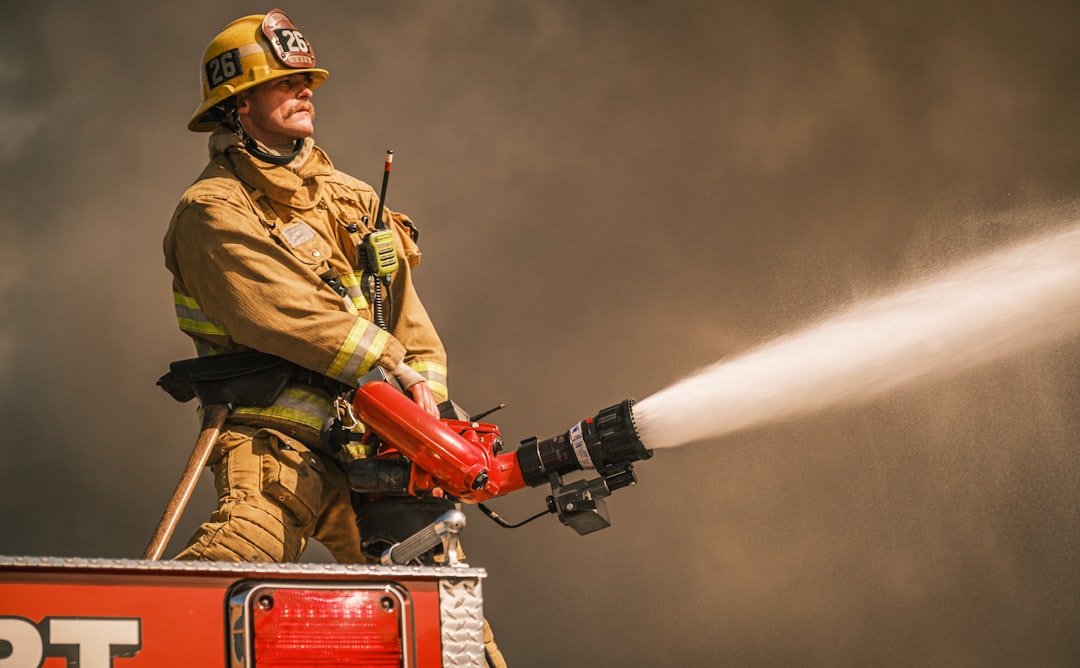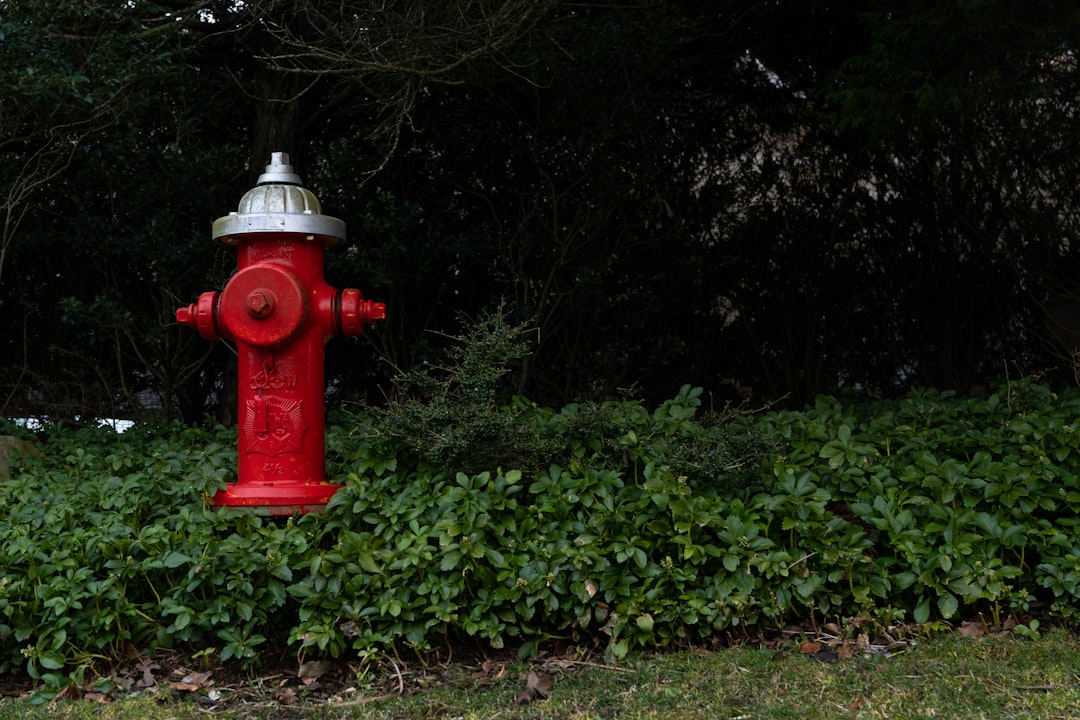

Engage prospects with a scan and streamline customer engagement with FREE QR code marketing tools by Sona – no strings attached!
Create a Free QR CodeFree consultation

No commitment

Engage prospects with a scan and streamline customer engagement with FREE QR code marketing tools by Sona – no strings attached!
Create a Free QR CodeFree consultation

No commitment
QR codes have evolved from a novelty to a strategic powerhouse in bridging offline engagement with online action. For fire sprinkler installation companies, QR codes represent an efficient, seamless, and highly effective way to boost customer engagement and streamline processes without requiring an app download or complex setup. Whether your focus is fire safety compliance, commercial fire sprinkler systems, or routine maintenance, QR codes can play a transformative role.
Fire sprinkler installation services often face challenges with manual paperwork, fragmented customer interactions, and the need for reliable service documentation. Missing high-value prospects because details never make it into a CRM leads to lost opportunities and a less predictable pipeline. Integrating QR codes into field operations and customer touchpoints turns every brochure, invoice, or inspection tag into a direct connection to digital resources, measurement tools, and real-time support. This creates a frictionless experience for customers and enables teams to track, nurture, and convert leads with greater precision, reducing the risk that valuable business slips through the cracks. For contractors, this alignment of offline and online workflows is key to faster follow-up and better attribution.
With the right approach, QR code technology unlocks new levels of efficiency and measurable impact for fire protection contractors and business decision makers. Used wisely, QR codes help surface previously anonymous or overlooked engagement, enabling timely outreach and improved responsiveness. Here is how fire sprinkler installation companies can harness QR codes to enable immediate access, drive better results, and future-proof their marketing and operational workflows.

QR codes bridge the gap between physical touchpoints and digital outcomes, making it easier to achieve real business goals like instant lead capture, compliance documentation, and enhanced customer education. Field teams commonly struggle with incomplete data, reliance on manual input, or missed follow-up when handwritten forms are lost or delayed. Delays in capturing lead information often mean competitors reach out first, and the chance to engage at the moment of intent is lost.
To replace outdated analog processes, connect assets to digital experiences, and improve response times, follow this approach. Think of QR codes as the connective tissue across your entire operation. A printed manual becomes a live training portal. A paper inspection log becomes a real-time compliance dashboard. A business card becomes a one-tap contact save with accountability built in.
Advanced platforms like Sona QR help fire sprinkler companies overcome fragmented or incomplete account data by automatically generating, managing, and tracking codes for each unique use case. Instead of manually updating links or guessing which brochures work, your team can manage campaigns centrally, swap destinations without reprinting, and integrate every scan with your CRM and reporting tools.
Fire sprinkler installation companies face unique challenges aligning offline interactions with digital outcomes. Paper documentation, static signage, and ad hoc phone calls rarely create clear data trails. Meanwhile, regulatory scrutiny continues to rise, and customers expect instant access to information. With QR codes deployed across common materials and moments, these pain points can be reduced significantly.
The value goes beyond convenience. QR codes create a measurable bridge between the physical world and your digital pipeline. You can know which maintenance tag triggered a service request, which direct mailer delivered a high-value facility manager, or which door sign drove a warranty activation. This turns every field interaction into a data point that improves follow-up, compliance, and customer satisfaction. See Sona offline attribution.
For this sector, QR codes applied to appointment reminders, compliance signage, service vehicle wraps, and warranty stickers ensure that actionable information is one scan away. The result is faster response, improved documentation quality, and fewer missed opportunities caused by incomplete or anonymous engagement.
Choosing the right QR code format determines how quickly your team and customers can get what they need. Fire sprinkler installation professionals typically rely on QR types that remove friction from training, compliance, and service requests, while keeping contact data fresh and centralized.
In practice, this means pairing each placement with the most appropriate destination. A field sticker might open a maintenance form. A proposal could link to a live scope-of-work video. A technician’s card might save a vCard instantly. The key is consistency, clarity, and routing data into the systems you already use to manage customers and projects.
Dynamic QR codes are especially valuable in this category. They allow rapid updates to URLs, automated A/B testing of calls to action, and device-based routing. With a platform like Sona QR, you can create, manage, and measure all of these formats in one place, which simplifies oversight and preserves data integrity.

The strongest QR code results come from mapping your offline footprint, then placing codes where they can capture intent and remove friction. Fire sprinkler companies often overlook their best conversion moments because they happen in hallways, mechanical rooms, or service vehicles. When each object becomes a gateway to action and data, you begin to see growth opportunities that used to be invisible.
Start by inventorying assets across projects and phases. Consider pre-install scoping, active installation, post-install inspection, annual maintenance, and emergency service. For each stage, identify the object or document customers are most likely to see, then give it a QR code that propels them to the next step.
By transforming these routine touchpoints into digital entry points, companies replace missed or anonymous interest with measurable signals. This raises conversion rates, improves audience targeting, and creates a reliable feedback loop between the field and your sales and service teams.

QR code marketing deployments are most effective when they align with real-world workflows that your customers and technicians already follow. Focus on a few high-impact use cases first, then expand once you see traction.
Inspection and compliance, maintenance scheduling, and customer education consistently rise to the top for fire sprinkler companies. Each use case contributes measurable value: faster audits, more booked work, and better satisfied customers who can help advocate for your services.
These use cases collectively reduce friction while increasing accountability. Over time, your data will show which buildings, departments, or managers engage most, allowing your team to prioritize outreach and identify upsell opportunities.
Each scan from a property manager, building owner, or contractor is a valuable signal. When you deploy unique QR codes across materials, you automatically segment audiences based on intent and context. That segmentation fuels more precise retargeting and sales workflows, so engagement does not end at the scan. It triggers the right follow-up at the right time. See Sona retargeting playbook.
Treat codes as behavioral tags rather than simple links. A scan from a maintenance tag indicates an active need. A scan from a trade show banner indicates early interest. A scan from a compliance flyer indicates regulatory urgency. Feed these distinctions into your CRM so marketing can nurture and sales can prioritize.
With Sona QR, each code becomes a smart entry point that captures device, time, channel, and context. You can then unify that data with website visits and campaign interactions, improving attribution and enabling high-probability outreach.

QR codes let you connect offline moments with digital tools in real time. For fire sprinkler installation companies, that means faster quotes, better documentation access, and stronger follow-up after meetings and site visits. When codes are embedded across channels, they produce a stream of measurable engagement data that feeds future decisions.
Treat QR as a connective layer across your marketing and service ecosystem. Codes on brochures drive visitors to forms and configurators. Codes on trucks drive neighborhood leads to quick consultations. Codes at trade shows help you never lose track of conversations once people leave your booth.
Centralizing all codes and analytics gives operations and marketing a shared source of truth. Platforms like Sona QR make it easy to manage codes at scale, monitor performance across channels, and sync scan data with CRMs and ad platforms for continuous optimization.
Begin with a specific, high-impact workflow that QR codes can simplify. For many fire sprinkler teams, compliance access at the point of inspection or fast maintenance booking after a site walk are prime candidates. Define an outcome you can measure, such as faster audit completion, reduced time to first response, or higher proposal acceptance.
Select the format and destination based on the action you want. If the destination might change, use dynamic codes so you can update links later without reprinting. If you need to capture data and measure performance, dynamic is essential.
Design your QR codes with scanning in mind. Apply brand elements, but do not sacrifice legibility. The call to action near the code is as important as the code itself. Always make the next step clear and valuable to the scanner.
Roll out codes where they will capture the most valuable interactions first. Prioritize installations and materials that influence revenue, safety, and compliance. Expand to secondary placements once the core workflow performs well.
Launch is the start, not the finish. Use analytics to understand how your codes perform across channels and audiences. Attribute conversions accurately and adjust your plan as data accumulates.
Without closed-loop tracking, fire sprinkler companies cannot prove the business impact of QR code campaigns or identify which leads slip through the cracks. You need to track each scan event and connect it to downstream actions like form fills, booked visits, document downloads, and closed revenue. This makes it possible to shift budget and effort to what works.
Start by defining the metrics that matter. For most contractors, time to response, booking rate, and audit readiness are leading indicators, while revenue tied to specific scan sources is the ultimate proof. Connect your QR platform to your CRM so scan data enriches contact records and can trigger alerts, sequences, and lead scoring.
By syncing scan data with your CRM and analytics tools, you can see which company profiles spend time with high-value content and which interactions indicate strong intent. Platforms like Sona QR and Sona.com extend this capability: Sona QR captures scan details, while Sona.com connects those signals to identity resolution and multi-touch attribution. You get a unified view of the buyer journey from first scan to signed contract.
Once your initial campaigns are running smoothly, expand where QR codes can deliver more value. Focus on placements and workflows that align with how customers interact with your brand. Scale incrementally so you can test and refine without overwhelming your team.
A strong expansion pattern is to add codes to everything customers receive or see during service and billing, then to everything your technicians use in the field. This creates a tight loop of engagement and data that compounds over time.
With the right integrations, every scan powers real-time workflows and personalized communication. Over time, this shifts your business from static, untracked engagement to dynamic, data-driven decision making.

Real deployments show how QR codes reduce friction and produce measurable gains. When the codes are tied to a clear objective and designed for the environment, results follow quickly.
The most effective examples combine compliance transparency with customer convenience. They remove guesswork, shorten cycles, and produce audit-ready records of who accessed what, when, and why.
Customer reviews in these programs often highlight two themes: speed and transparency. Audit anxiety decreases when documentation is immediately accessible and verifiable, and decision makers appreciate clear next steps that put them in control.
The difference between a QR campaign that performs and one that underwhelms often comes down to execution details. Scannability, context, and follow-through matter as much as strategy. Make sure your team owns these basics and reinforces them at every deployment.
Equally important is avoiding common errors that lead to missed engagement. Poor placement, weak CTAs, and outdated destinations erode trust and reduce scans. A short checklist and periodic audits will keep quality high.
QR codes are more than a shortcut. They are a strategy. For fire sprinkler installation companies, QR technology transforms every surface, from compliance stickers and service brochures to field equipment, into an instant digital access point. This approach addresses recurring pain points, from reducing missed leads to surfacing engagement signals at the right time. It fosters real-time engagement, enables robust safety compliance, and delivers a connected customer journey that moves seamlessly from first inquiry to signed contract and ongoing maintenance.
By embedding QR codes across key customer and technician touchpoints, fire protection contractors can collect actionable data, simplify complex processes, and convert analog inefficiencies into measurable business growth. With advanced tracking, CRM synchronization, and automated follow-up, companies are equipped to prevent valuable prospects from remaining anonymous or falling through the cracks. You can convert silent signals into actionable intelligence, optimize every campaign, and deliver unmatched safety, service, and accountability.
As fire protection markets become more competitive and regulatory requirements more rigorous, turning every customer interaction into an opportunity for smart engagement can be the difference between missed revenue and long-term growth. Consider how an integrated QR strategy, supported by platforms like Sona QR and Sona.com, can help your company identify high-fit clients, strengthen compliance outcomes, and stay ahead in a digitally enabled landscape. You can generate and track your first QR codes in minutes, then expand methodically as results and insights accumulate. Start creating QR codes for free.
QR codes have revolutionized fire sprinkler installation companies by transforming traditional, paperwork-heavy processes into seamless, interactive experiences that enhance safety compliance and operational efficiency. Whether it’s streamlining access to installation manuals, enabling instant equipment verification, or accelerating maintenance scheduling, QR codes replace cumbersome methods with instant, mobile-friendly actions that capture real-time data and improve service accuracy.
Imagine instantly accessing up-to-date system details on-site or providing clients with hassle-free, digital proof of inspection—all while tracking every scan to optimize your workflow and client communication. With Sona QR, you can create dynamic, trackable QR codes in seconds, update content without reprinting, and link every scan directly to actionable insights that boost customer trust and operational excellence.
Start for free with Sona QR today and turn every scan into a step toward safer, smarter fire sprinkler services.
Installing fire sprinklers enhances safety by ensuring compliance with regulations, provides instant access to inspection and maintenance records, reduces audit times, and improves customer trust through transparent documentation.
Choose a company that uses innovative tools like QR codes to ensure efficient documentation, compliance tracking, and seamless customer engagement, and that integrates with CRM systems for reliable follow-up and service.
The article does not specify costs but highlights that QR codes are inexpensive to create and deploy, helping companies modernize customer touchpoints cost-effectively alongside installation services.
Safety regulations require up-to-date compliance documentation and timely inspections, which can be facilitated by QR codes linking to current codes, manuals, and certification records that are easy to update and access.
While specific intervals are not detailed, the article emphasizes using QR codes on inspection and maintenance tags to schedule and track routine maintenance efficiently, ensuring timely service and compliance.
Use Sona QR's trackable codes to improve customer acquisition and engagement today.
Create Your FREE Trackable QR Code in SecondsJoin results-focused teams combining Sona Platform automation with advanced Google Ads strategies to scale lead generation

Connect your existing CRM

Free Account Enrichment

No setup fees
No commitment required

Free consultation

Get a custom Google Ads roadmap for your business






Launch campaigns that generate qualified leads in 30 days or less.
